 Want more exposure for your YouTube videos?
Want more exposure for your YouTube videos?
Wondering how to get your videos in front of more viewers?
With a few simple techniques, you can increase the likelihood that your YouTube videos will be noticed and watched by your target customer.
In this article, you'll discover five ways to get more views for your YouTube videos.
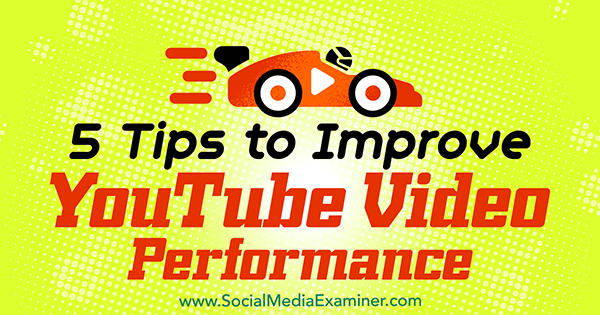
#1: Monitor Your Target Audience to Reveal Commonly Shared Questions Your Videos Can Answer
To make your content marketing campaign successful, begin by understanding your audience. To develop relevant YouTube videos, pay particular attention to your customers' concerns so your YouTube videos can address those topics.
Social listening software can help you monitor brand mentions and relevant keywords from the web and social media. Tracking phrases that use your keywords in real time helps you learn about your target customers' problems as soon as they crop up.
If you don't have existing customer pain point data, websites like Quora are also great for understanding your audience. For example, if you run a carpet-cleaning business, a quick search on Quora reveals more than 900 questions and 6,000+ people interested in how to remove Play-Doh. You can also use social media platforms to poll your audience and discover problems you can solve.
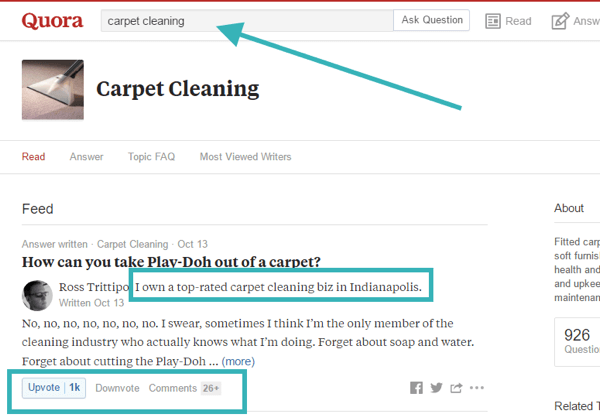
#2: Develop a Signature Production Style So Viewers Know What to Expect
Choosing a topic for your YouTube video is only the beginning. Your video also needs to cover that topic in a compelling way. To maximize video views, choose the right topic and create evergreen content that will withstand the test of time.
On YouTube, viewers expect a certain caliber of video. A shaky webcam and a haphazard script won't cut it. Even if you're filming a candid behind-the-scenes look at your business, your video needs a keen editorial touch and high-quality shots.
For the overall format of your video, veteran YouTube marketer Tim Schmoyer recommends hooking your audience in the first 5 seconds and showing a bumper. For your hook, offer your audience a unique value proposition that you'll reveal in your video. Choose something that you know (based on your customer research) will compel people to keep watching.
A bumper is a short brand logo that precedes your content. Although a bumper isn't necessary, it's a good way to promote your brand.
In addition to Schmoyer's point that you need to deliver on the promise of your title, you also need to craft a compelling narrative. Script your video and focus on delivering the value proposition your audience is craving, whether that's entertainment, advice, or other valuable information.
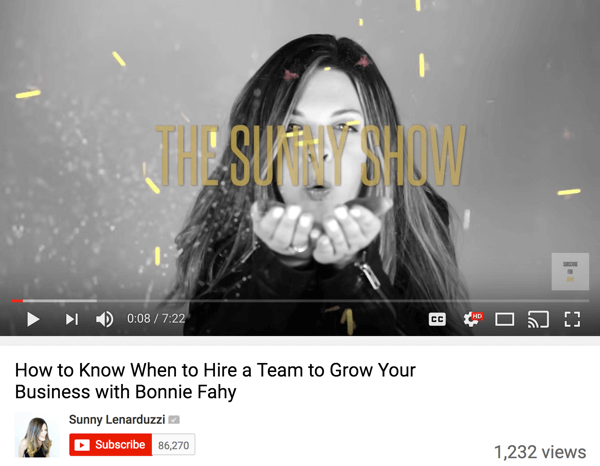
Then end your video with a call to action (CTA), which tells your viewers what to do next.
Get World-Class Marketing Training — All Year Long!
Are you facing doubt, uncertainty, or overwhelm? The Social Media Marketing Society can help.
Each month, you’ll receive training from trusted marketing experts, covering everything from AI to organic social marketing. When you join, you’ll also get immediate access to:
- A library of 100+ marketing trainings
- A community of like-minded marketers
- Monthly online community meetups
- Relevant news and trends updates
#3: Deliver a Strong Call to Share Via Cards and End Screens
A CTA is paramount if you want your video to generate leads. Your CTA might ask viewers to share your video, visit your website, or check out more videos. It should flow logically from your video content. Don't try to sell viewers your cutting-edge software when they don't even know what it does.
Until recently, YouTube Annotations were a common way to communicate CTAs to viewers. Annotations were semi-transparent speech bubbles, titles, notes, and so on that you could layer on top of your video inviting users to take a certain action.
However, as of May 2017, YouTube is removing the ability to edit and add annotations because they don't work on mobile devices. Now that most video creators use the new cards and end screen features instead of annotations, YouTube is ready to discontinue the Annotations feature.
The new cards and end screens are mobile-friendly, and an end screen is a great way to end your video with a CTA. To add an end screen, click Video Manager, Videos, and then the End Screen & Annotations option.
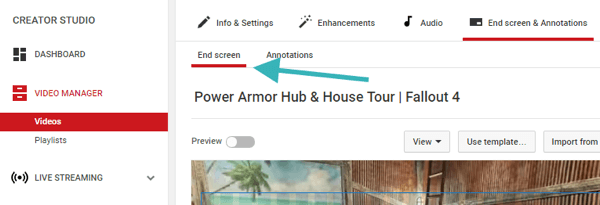
On the End Screen tab, you can select Use Template to add any CTA you wish, including links to other channels, Subscribe buttons, and links to your website.
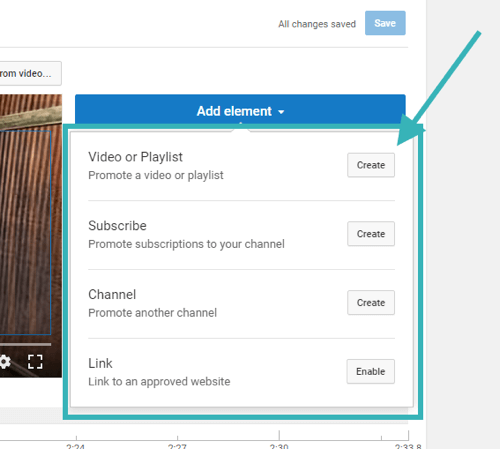
#4: Use Creator Studio to Optimize Your Channel and Videos for Increased Discoverability
Optimizing your YouTube channel and video makes it easier for people to find your content when they do a Google search. To optimize your account, create a Partner Verified account, which allows you to monetize your videos, upload longer videos, and upload custom thumbnails for your videos.

Discover Proven Marketing Strategies and Tips
Want to go even deeper with your marketing? Check out the Social Media Marketing Podcast! Publishing weekly since 2012, the Social Media Marketing Podcast helps you navigate the constantly changing marketing jungle, with expert interviews from marketing pros.
But don’t let the name fool you. This show is about a lot more than just social media marketing. With over 600 episodes and millions of downloads each year, this show has been a trusted source for marketers for well over a decade.
To verify your account, log into your Creator Studio Dashboard. Click Channel and then Status and Features.
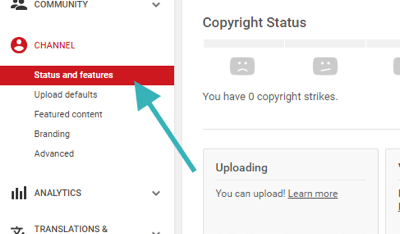
Then click Enable under the Monetization tab.
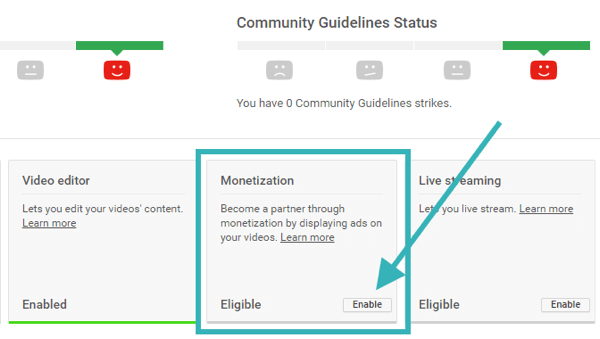
After your account is verified, you can optimize your video by adding a thumbnail. To upload a custom thumbnail, go into your Video Manager. Then click the Custom Thumbnail button that appears to the right of your preview.
You should also optimize your title. An optimized title clearly communicates your value proposition to your audience and it should contain the main keyword you're targeting. People especially love comprehensive lists and how-to videos, so if your video covers that type of content, share it in your title.

In your video description, include a brief summary of your video, URLs that link to related content or back to your website, and the main keyword phrase you're targeting. Adding tags also helps people find your video. Use your target audience research to figure out how to optimize your title, description, and tags. Don't forget to save your changes when you're done.
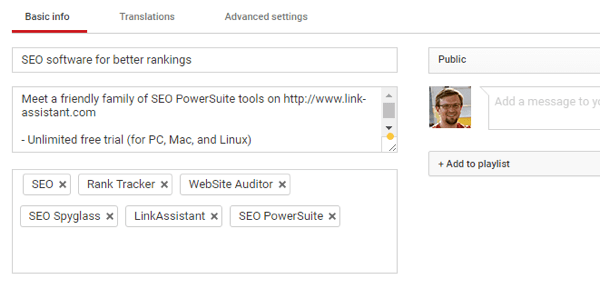
To help YouTube index your video's content, upload a comprehensive transcript. To transcribe your video narration, you have a few different options including creating and uploading a .txt file of the text, transcribing and auto-syncing your content by hand, and buying subtitles/translations from various providers.
To access these transcription methods in YouTube, click the Videos option under Video Manager.
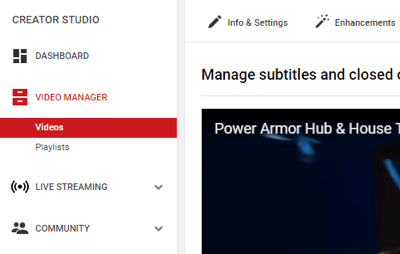
After you click Subtitles/CC in the bar along the top, click Add New Subtitles or CC and select the option that appeals to you.
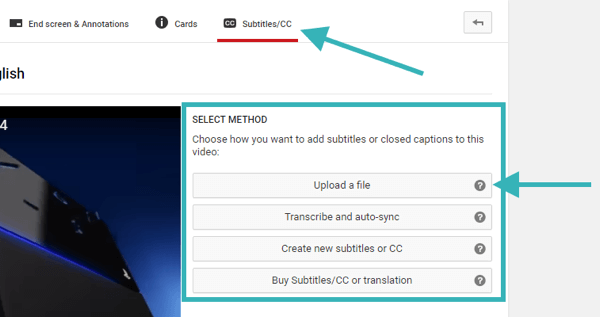
#5: Promote Your Channel and Videos on the Platforms Your Audience Frequents
Finally, after you've uploaded the best video you possibly can, use your target audience research to promote your video in places your customers are sure to see. With Google Analytics, you can find out which social platforms your audience uses, and split testing can tell you what messaging they prefer.
Do your customers frequent Twitter? Better start tweeting away. Instagram? Include screenshots from your video and teasers that entice them to click.
And don't stop there. Write a blog post to accompany and promote your new video. Embed the video in your blog and drive traffic to your website, and from your website to your YouTube channel. Encourage the customers you already have to start viewing your new video content.
For example, James Wedmore wrote a blog post about how to create a sales video and embedded his YouTube video of the same name within the blog post.
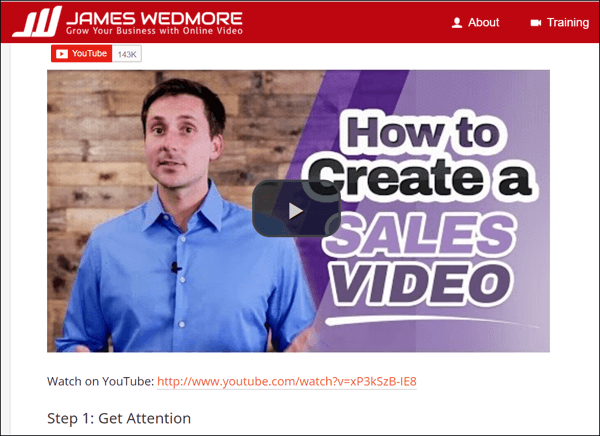
To drive interest, create an uploading schedule to keep your YouTube channel fresh. A promotional calendar can remind you to promote your new content regularly. That's the only way to build up your YouTube views.
Want more like this? Explore YouTube for Business!
.
Conclusion
All of this work pays dividends when you realize that time watched is YouTube's most important metric in determining which videos viewers see.
The more people who watch your video through to completion (because you've done your homework), the higher your content will rank. And, of course, if your audience likes your content, they're more likely to share it as well.
What do you think? Have you had success with any of these techniques? Which ideas do you plan to try on your own YouTube channel? Please share your thoughts in the comments.
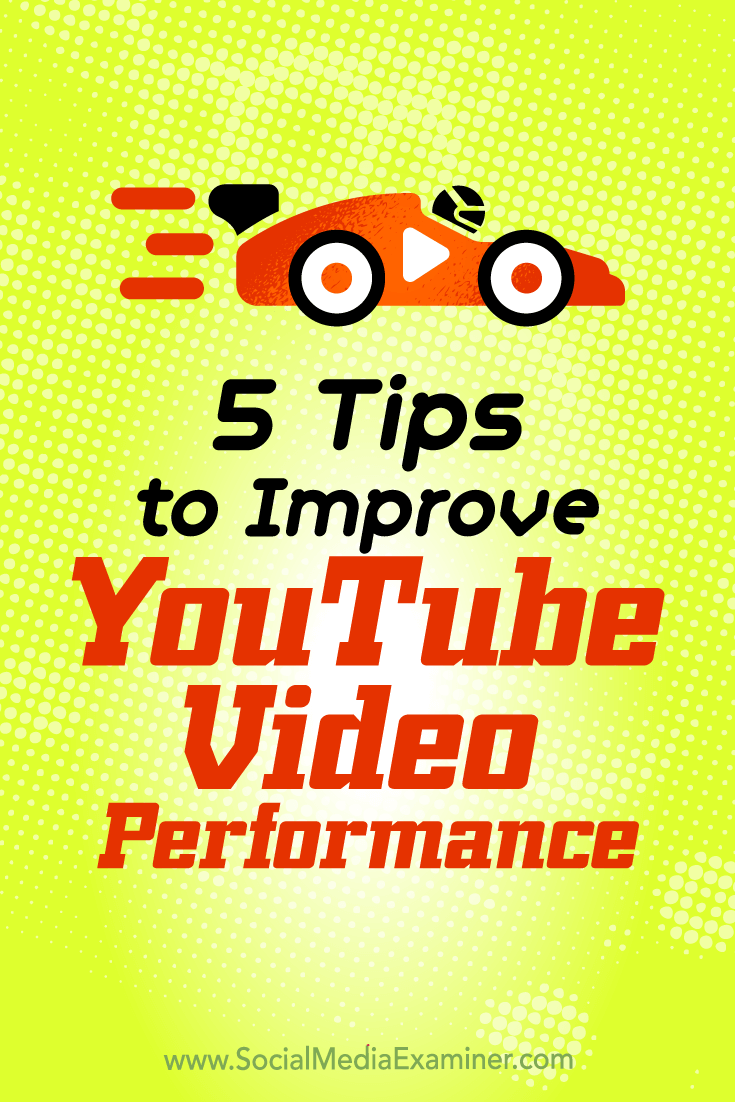
Attention Agency Owners, Brand Marketers, and Consultants

Introducing the Marketing Agency Show–our newest podcast designed to explore the struggles of agency marketers.
Join show host and agency owner, Brooke Sellas, as she interviews agency marketers and digs deep into their biggest challenges. Explore topics like navigating rough economic times, leveraging AI, service diversification, client acquisition, and much more.
Just pull up your favorite podcast app, search for Marketing Agency Show and start listening. Or click the button below for more information.

